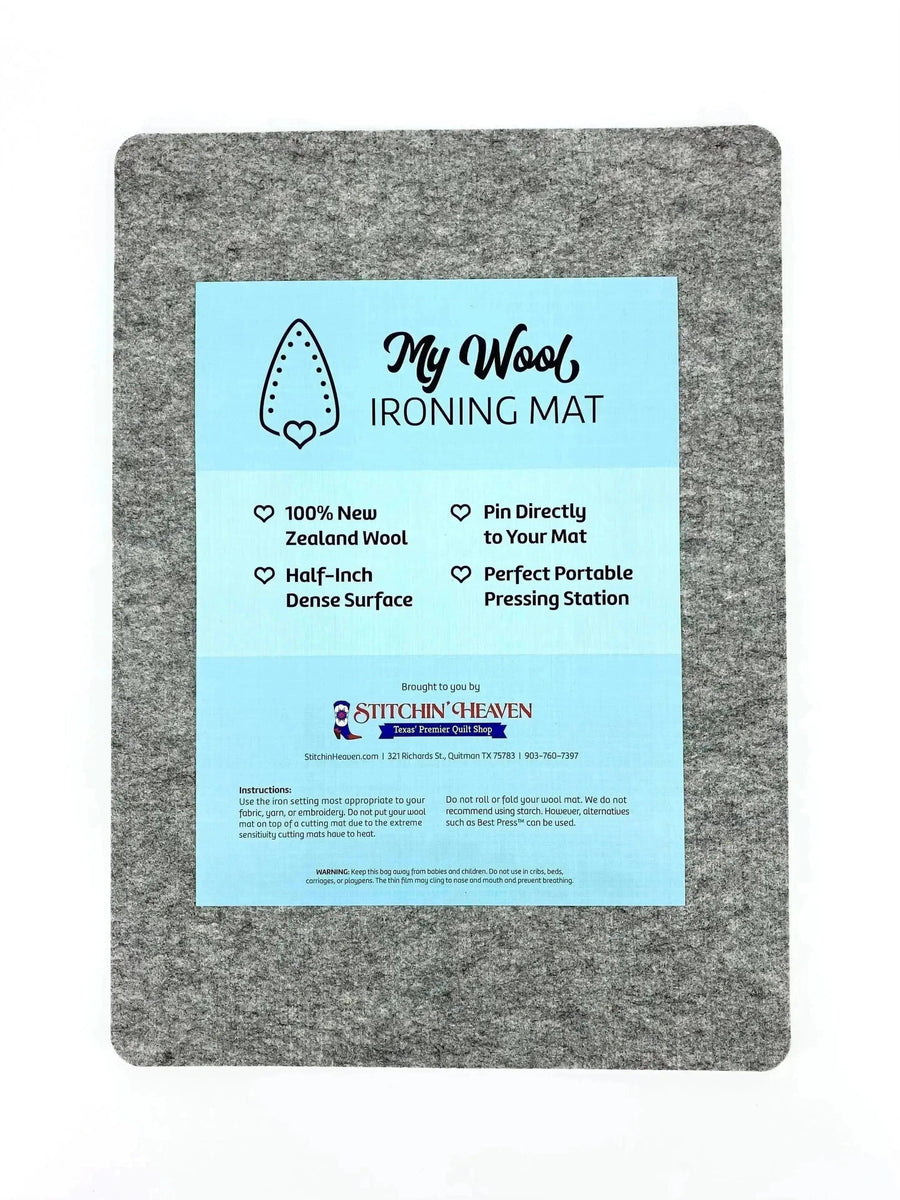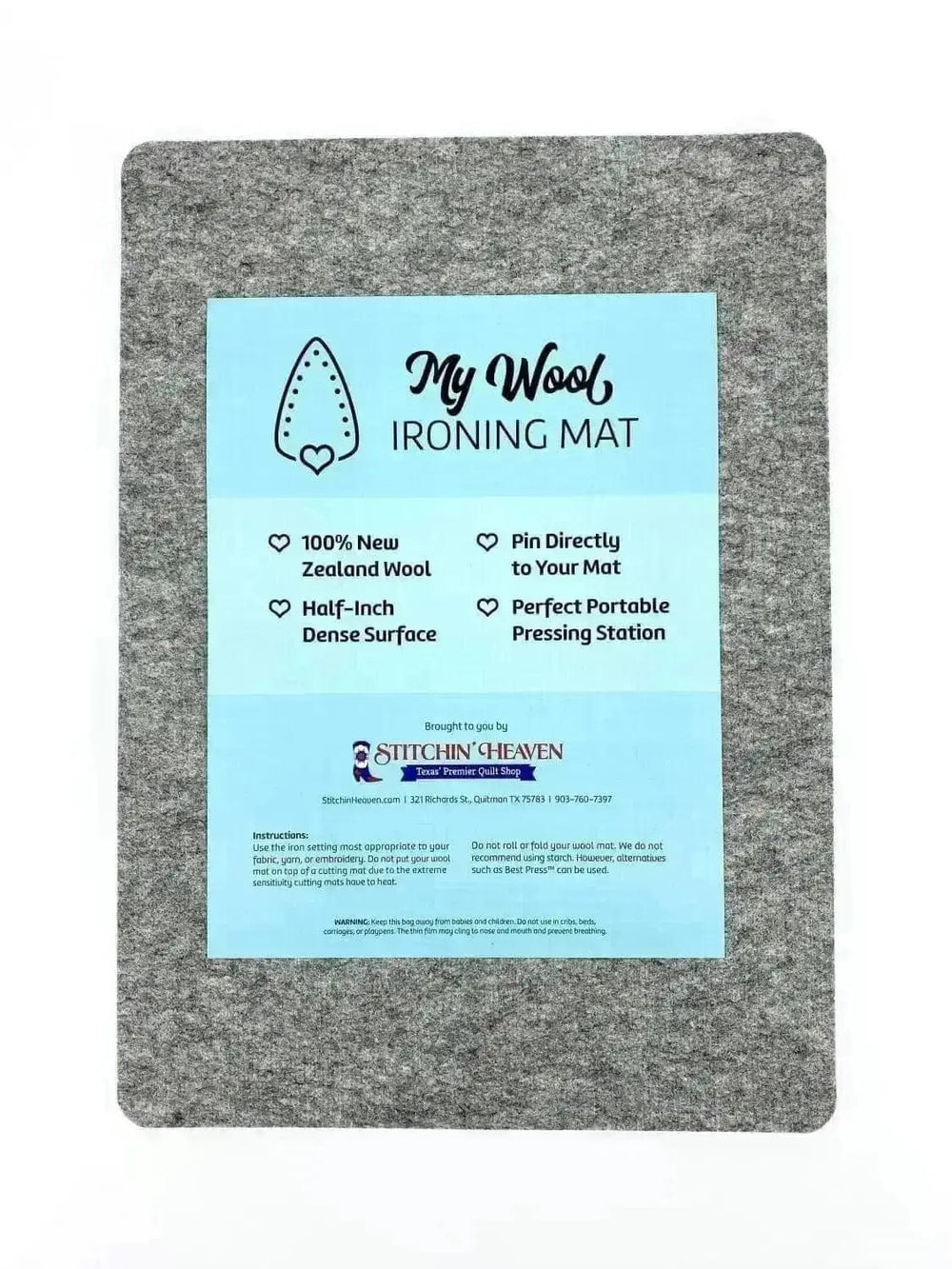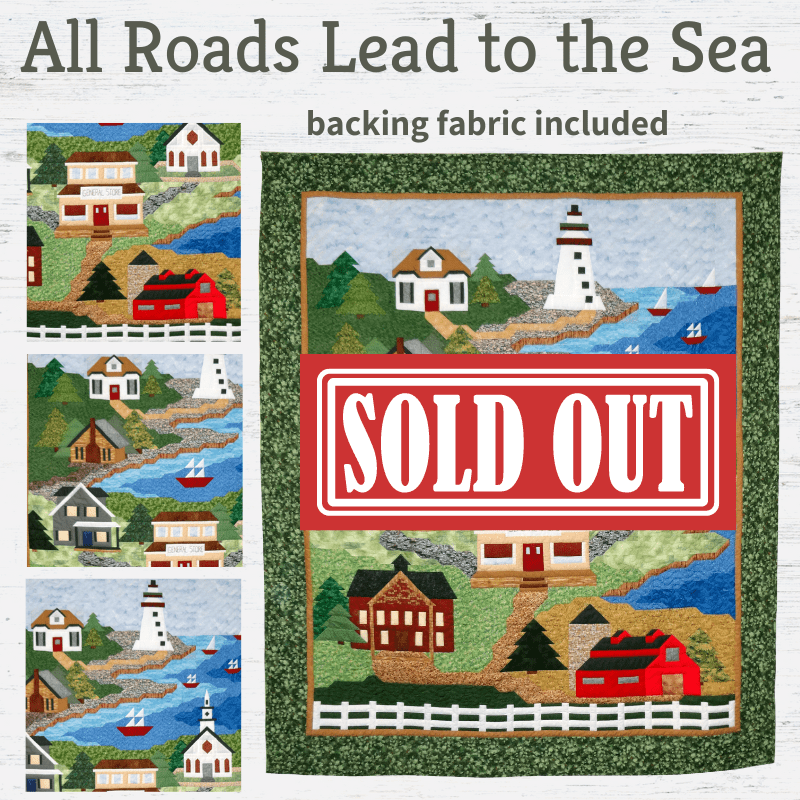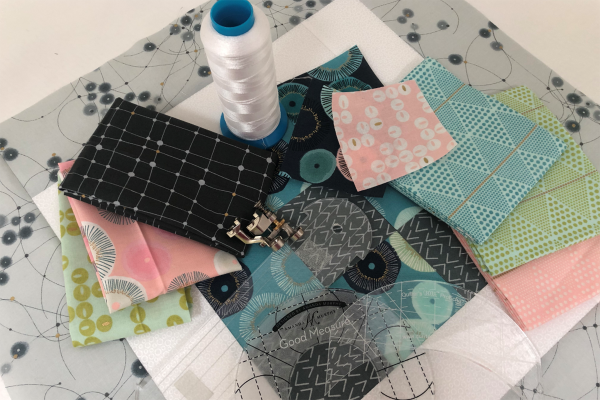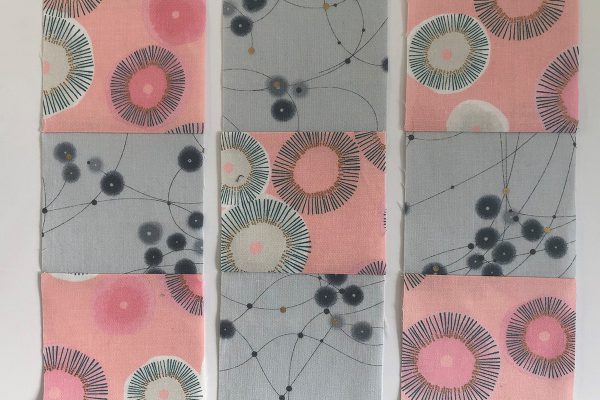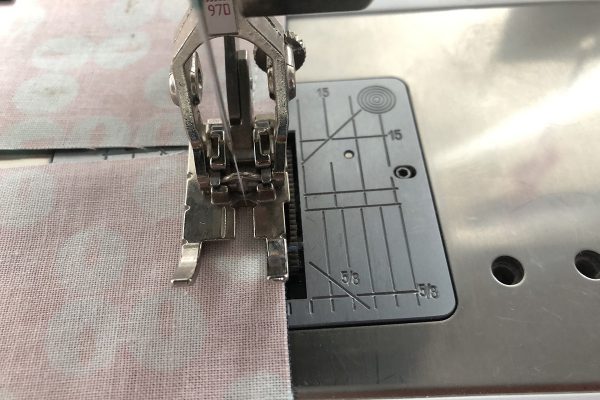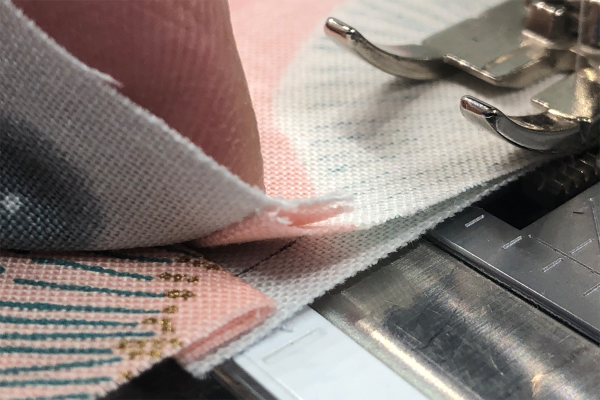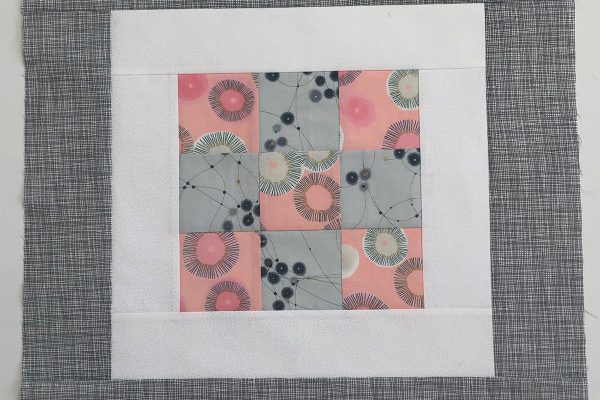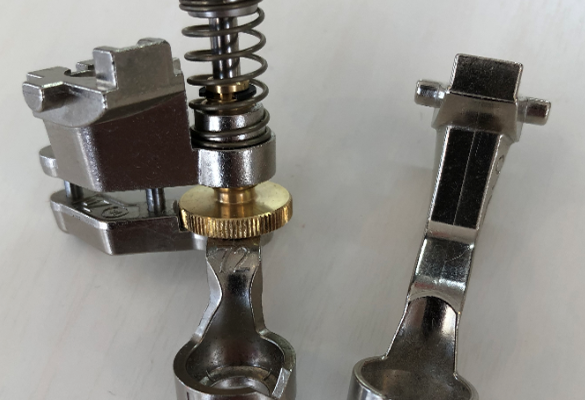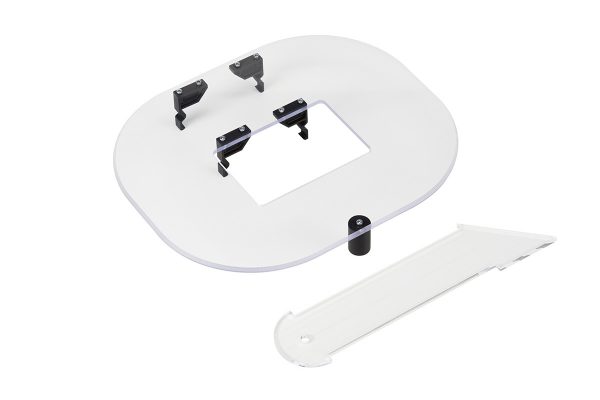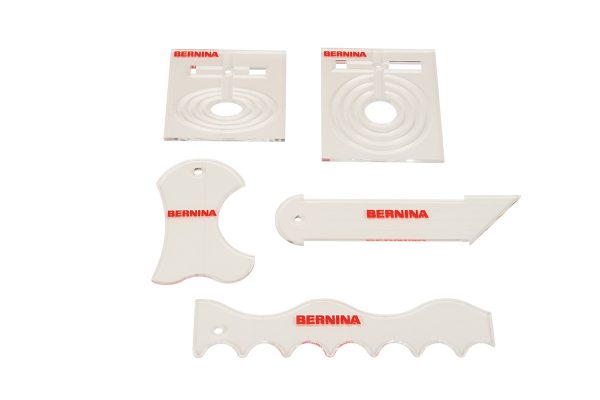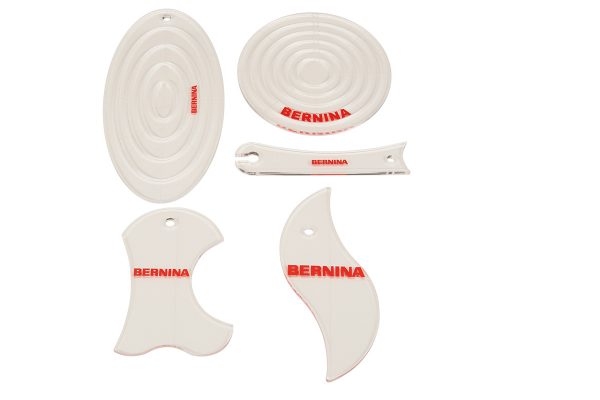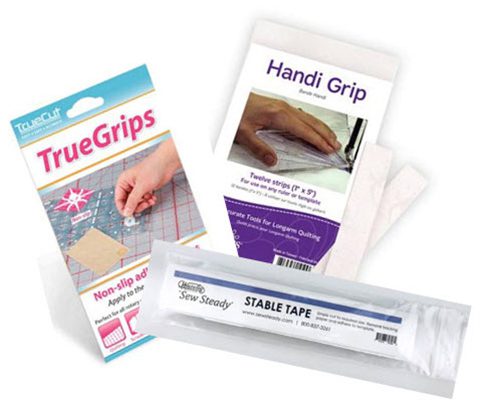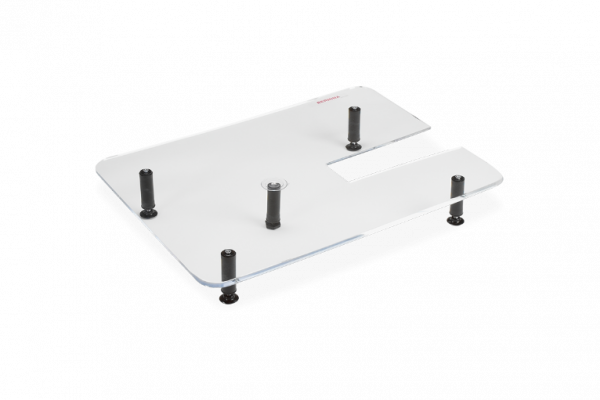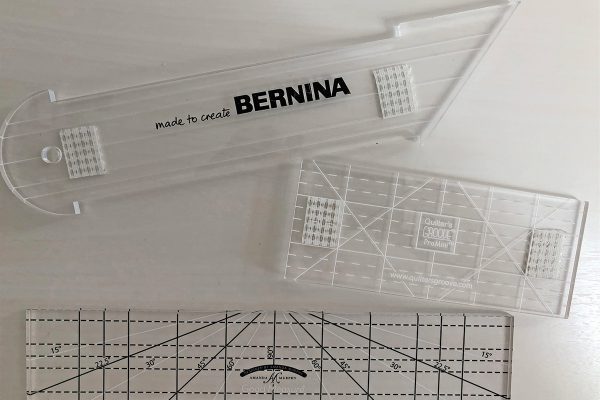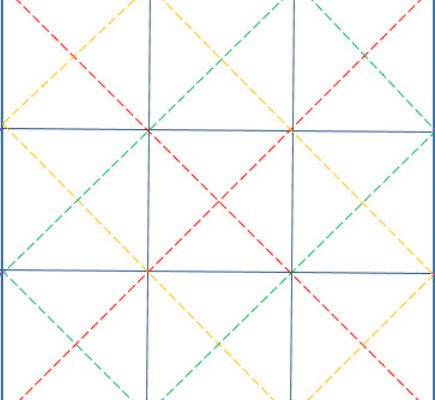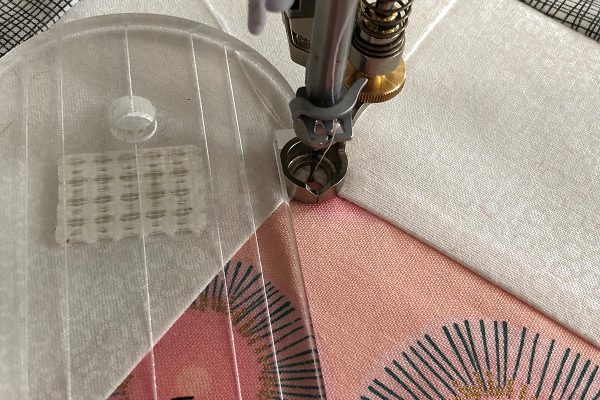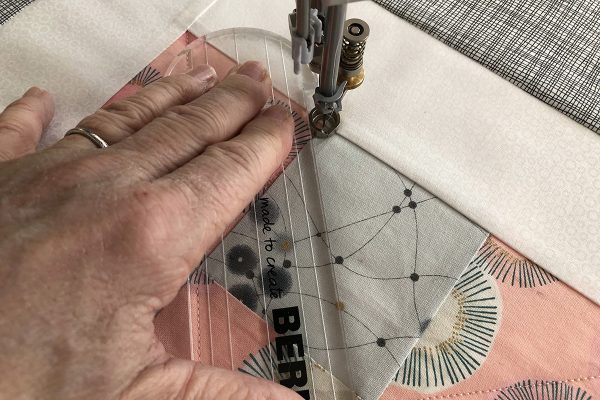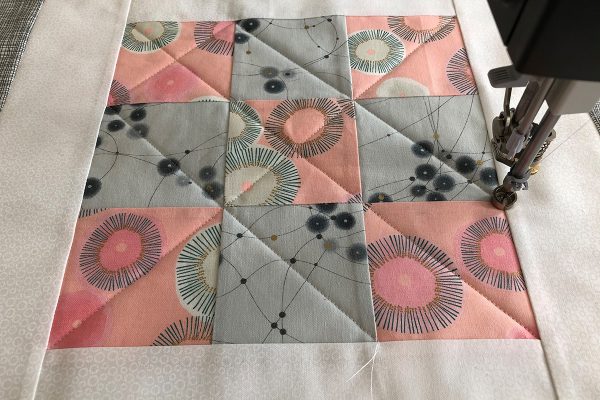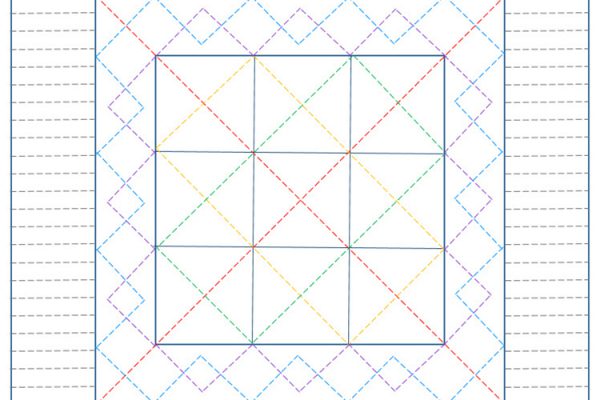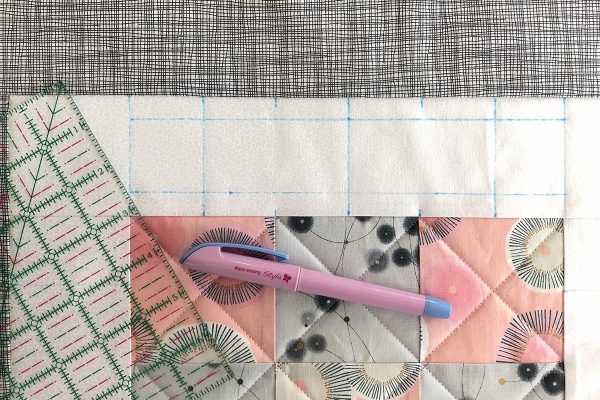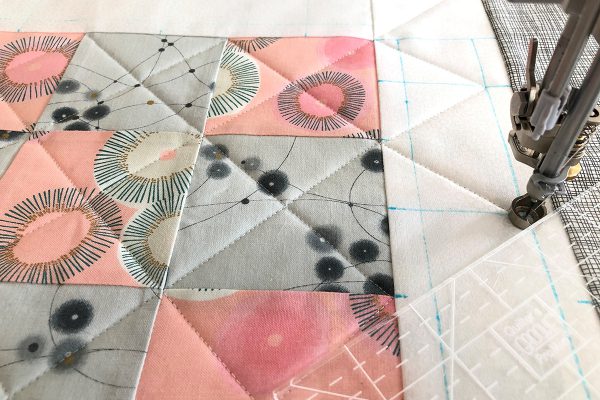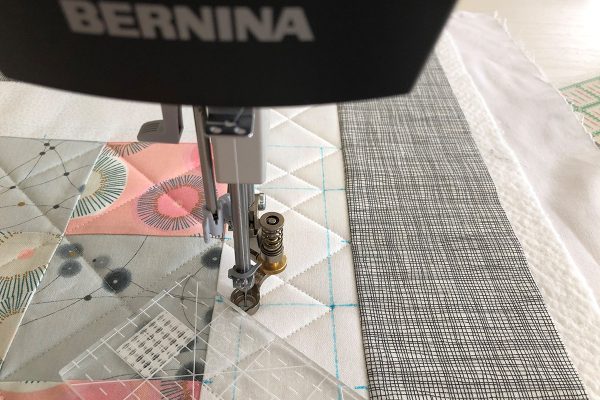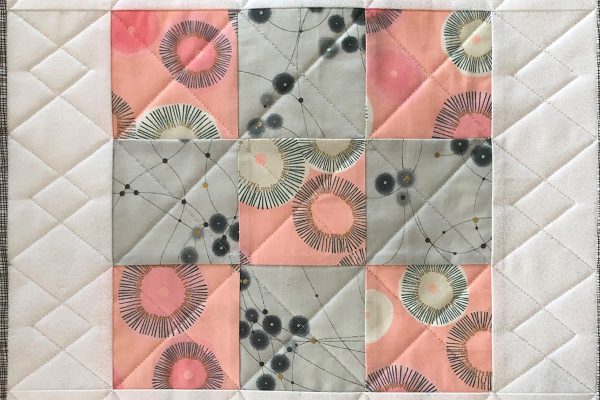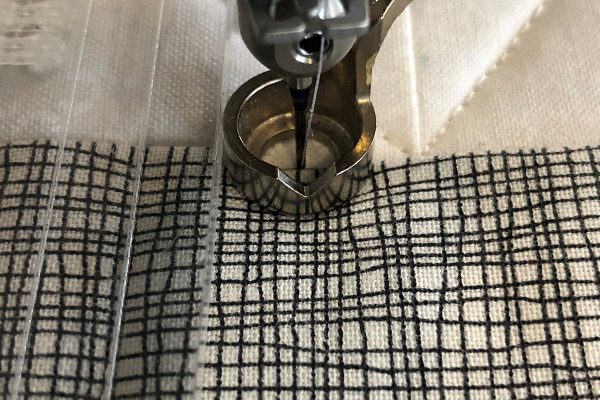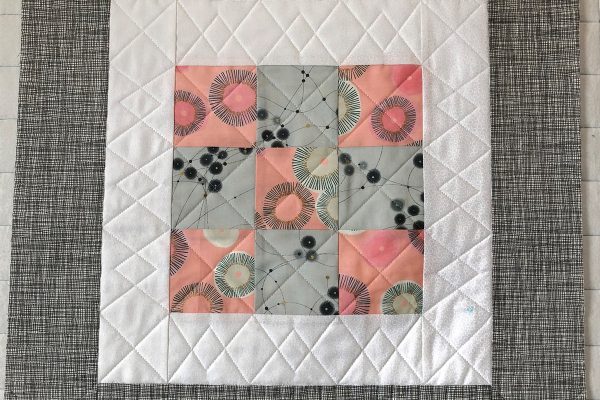Rulerwork for Beginners, Part 1: Rulers

Rulerwork is a quilting technique using thick acrylic quilting rulers to create exact, repeatable designs. Quilting rulers are used with a foot designed for rulerwork, as a guide for a line, a curve or a specific design. These techniques are not new to the world of quilting, most especially longarm quilting. Longarmers have been using rulerwork techniques for years. Now that we have a ruler foot for BERNINA domestic sewing machines, everyone is able to employ rulerwork techniques.
Over the next nine months, we will explore many rulerwork techniques. Each month we will construct a 9 patch block with 2 borders. We will then quilt the block with the ruler technique presented that month. At the end of nine months, you will have the choice of constructing 9 – 20” pillows or putting the quilted blocks together for a 60” x 60” quilt.
Let’s get started.
Needed Supplies
- Fabric-I used a fat quarter bundle of 32 fabrics for the entire project. You will be able to get the 4 and/or 5 squares needed for the 9 Patch as well as the outside border strips
- Inside Border for all 9 Blocks-1 ½ Yards
- Backing- a 22” square of a muslin as the backing for each square. If using a Q Series machine on the frame, you will need 3 ½ yards of fabric. Use 24” at a time on the frame. This will do 2 squares.
- Batting- a 21” square for each month
- Patchwork Feet #37, #37D, #57, #57D, #97, or #97D
- Ruler Foot #96 if using a Q Series Machine
- Adjustable Ruler Foot #72 if using a BERNINA domestic machine
- Adjustable Stippling Foot #73 if adding free-motion quilting
- Straight Stitch Throat Plate
- Thread for construction
- Thread for quilting
- Machine Needles #80 for piecing
- Machine Needles #90 Jeans for quilting
- Water Soluble Marker for light fabrics
- Chalk Marker for dark fabrics
- Rotary Cutting Mat and Cutter
- Quilting Rulers listed in Quilting Directions each month (I will list the specific rulers I used. You may use other rulers, you just may not be able to get the exact design created.)
- BERNINA Echo Quilting Clips
Cutting Instructions for the 9-Patch Monthly Block
Nine Patch Center
- Cut squares 3 1/2″. Cut 4 from one fabric and 5 from another. Sometimes this is dictated by light and dark.
First Border
- Cut 2 border strips 3” X 9 1/2″
- Cut 2 border strips 3” X 14 1/2”.
Second Border
- Cut 2 border strips 3 1/2″ X 14 1/2″
- Cut 2 border strips 3 1/2″ X 20 1/2″
Construction of the 9-Patch Block
Insert a #80 machine needle and attach the straight stitch throat plate. Locate the 1/4″ marking on the stitch plate. When the squares are stitched together make sure the mark on the stitch plate in front of the foot’s toe is visible.
Even though the squares in the pictured block have a similar value, let us consider the pink as the dark and the gray as the light. Locate the 1/4″ mark on the stitch plate. That mark should be visible as you piece.
Stitch a row of dark, light, dark.
Stitch a row of light, dark, light.
Stitch a row of dark, light, dark.
Stitch the rows together nesting the seams in opposite directions.
Add the inner and outer borders.
Layer the backing, batting and constructed square. Pin baste or spray baste if desired.
You may construct a new block each month, or if you like you may construct all nine at one time. 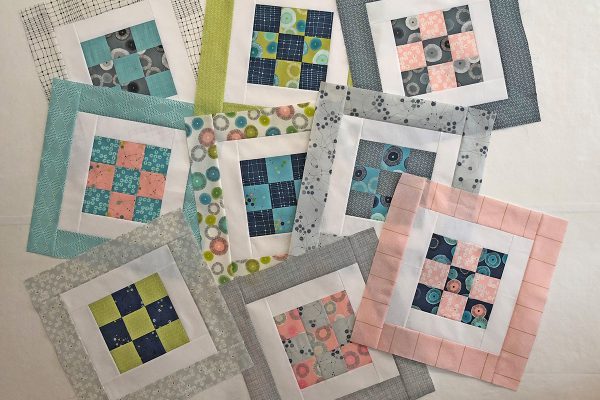
The instructions to make each square into a pillow or to make all the squares into a quilt will be available in Blog Post #9.
Ruler Foot
There are 2 Ruler Feet available from BERNINA.
If stitching on a domestic BERNINA machine, you will need the Adjustable Ruler Foot #72. If using a QSeries Longarm machine, you may use Ruler Foot #96 or the Adjustable Ruler Foot #72.
If using a Q Series machine on the frame you will need the Rulerwork Kit which includes foot #96.
Attach the appropriate foot to your machine. If you have attached Foot #72 you, will need to use the gold dial to adjust the height of the sole. Place the quilt sandwich under the foot and turn the dial so the bottom of the sole just touches the sandwich when the foot is down.
The Ruler Foot is a 1/2” Foot. With the needle in center the edge of the foot (called the Fence) is 1/4″ from the needle in all directions. The Fence keeps the ruler away from the needle of the machine. There is a “v” cut out in the front of both feet that lines up with the needle. There are markings on the inside of Foot #72 that help with precise placement.
Quilting Rulers
A standard quilting ruler is 1/4” (6 mm) thick. This thickness of the ruler works on all BERNINA sewing machines and longarms. As we go through each month, I will be introducing you to different rulers. BERNINA makes two Ruler Sets. Ruler Kit for Table Model Machines
and Ruler Kit for Frame Model Machines.
These sets are good starter sets with straight rulers, curves, arcs and more. While these rulers are not necessarily specific to a particular design with detailed marked lines, using painter’s tape across the ruler to create a needed line works very well. When you discover a particular design you like, then you may want to purchase a ruler specific to that design. I will be showing some of those rulers.
There are many different gripping materials for Quilting Rulers. If you are quilting at a table model machine, you will want something that will grip the fabric, as you will need to move the ruler and fabric at the same time. At the frame, you will want something to keep the ruler from slipping but still let the ruler move when need be.
Setting up your machine is another component of success. The best case scenario for doing rulerwork on a domestic machine is to have the machine down in a table so you have a nice flat surface. If this is not possible, then a Plexiglass Extension Table is a good idea. The Slide-on Table that comes with your machine may be a little small, and with the sloping edges the rulers are not properly supported.
A Q Series Table Model machine comes in a suitable table. And of course a Longarm on a frame has the entire surface laid out!
Insert a #90 Jeans needle and attach the Ruler Foot. (If using the Adjustable Ruler Foot #72, make sure it has been adjusted for your quilt block.) Attach the Straight Stitch Plate if you have not already done so. Select Needle Stop Down. On the Q Series machines, select BSR2. On the domestic machine, lower the feed dogs. You may want to have a practice sandwich every month to try out the ruler techniques.
As you work through the ruler exercises, it will be important to support the ruler so that it does not slip. But you also want to be conscious of not pressing down too hard on the ruler or press the ruler against the foot to hard. If you are on a frame, make sure you are not pushing the machine against the ruler too hard. The ruler is a guide that requires a light touch.
Now that we have gone over needed information for participating in this Rulerwork series, let’s get started.
Rulerwork Month #1
Straight Lines
There are many straight line rulers. Here there are three different straight line rulers. You will only need one of them, but each has its advantages. The BERNINA ruler has notches that line up with the stitching line, the Good Measure and the Quilters Groove rulers have more markings on them which can be useful.
We will begin by stitching a large X through the center of the block. Even if you have never done rulerwork before, you can do this! (However, if you are brand new to rulerwork you may want to make an extra block for practice.)
If you are new to rulerwork, let’s concentrate on just the 9-Patch in the center of the block.
Looking at the red lines in the diagram, start in one corner of the 9-Patch. Pull up the bobbin thread and secure your threads. Lower the needle right in the corner and lower the foot BEFORE you pick up the quilting ruler. (Getting in the habit of always having the needle down in the fabric and the foot down before using the ruler will prevent broken needles and broken rulers!) Position the ruler against the edge of the foot.
The notches on the BERNINA ruler will indicate the stitching line. Position the lower notch on the BERNINA ruler on the intersection of the next seam. The indentation between the notches will be the stitching line. This can help with knowing where you will be sewing. The other two rulers mentioned will need to be positioned 1/4″ away from where you want the stitched line to be, but by using the marked 45 degree lines, this is easy to do. Stitch from one corner diagonally through the center of the 9-Patch to the opposite corner. Secure the threads and cut. Repeat, stitching between the opposite corners.
The ruler must be held in place as you guide it against the edge of the foot. Do not push hard against the foot as that can actually make it more difficult and can affect the quality of the stitch.
Make sure the ruler is being held where the stitching is taking place, stopping to move the ruler when needed.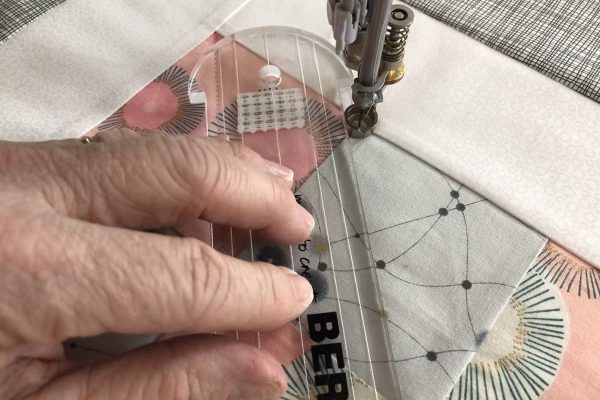
If you have enough hand strength, you can stretch your hand out further, if that is more comfortable.
Looking at the diagram, stitch the yellow rectangle and then the green rectangle. You always want to study your stitch path to allow for the fewest number of starts and stops.
If you have been working only on the center 9-Patch, complete the large X on the entire block by stitching a line from each corner of the 9-Patch to the outside corner of the block. (This could have been done as one line from one corner of the square to other, but if you are a true beginner, I wanted you to just do the center of the block first)
Now let’s look at the entire quilting roadmap.
We will now do the inner border. This will require some marking on the fabric. On each side of the 9-Patch, mark the seam and the center of each patch. Place a mark opposite those first marks on the outer edge of the border. Connect the lines in the center of each patch and on the ends. Mark a line 1/2″ from the edge of the 9-Patch and a line 1/2″ from the opposite side of the border.
Begin stitching in one corner of the 9-Patch following the purple on the Roadmap. Turn at each corner and continue around the border.
The second run around the first border will be orientated off the opposite side of the border. Begin in one corner and follow the blue lines on the Roadmap.
When you are finished your border should look like this. You may begin to see that the design options are limitless even with just straight lines!
We will finish the square with evenly spaced lines around the outside border. Notice from the Roadmap that I have stitched a diagonal line in each corner of the square forming an “X”. The straight lines on the borders are between the corner “X’s”. Determine the spacing of your lines to make sure you are going to come out even. I determined that spacing the lines 1/2” apart works well because the space I need to fill is 14”. When you are new to this, you may want to mark the border every 1” just to make sure you are spacing correctly. It will be easy to make small adjustments along the way rather than waiting until the end where making any needed adjustment is more noticeable.
Begin on the outside edge of the square, stitching from the outside straight into the corner of the inner border. Stitch in the ditch for 1/2″. This can be done with your ruler or by eyeballing it. Position the ruler so the 1/4″ line rests on top of the stitched line. Stitch the next line in the opposite direction. Stitch over 1/2″ and repeat until you have one side of the square.
Repeat until all four sides are done.
You did it!! That was a lot of instruction! But I hope you found rulerwork to be a wonderful way to perfect your free motion quilting!
The instructions for making this block into a pillow or making all the blocks we will be doing into a quilt will be given in the last blog. Remember, this is a 9-part series and you will be learning a different technique each month. Next month we will move on to curves! I will be using the BERNINA Straight Edge ruler because it has the perfect rounded end. I will also be using two curved rulers from Quilter’s Groove, the ProEcho 11 And ProEcho 18.
Rulerwork for Beginner Series
Rulerwork for Beginners, Part 1: Rulers
Rulerwork for Beginners, Part 2: Roadmap
Rulerwork for Beginners, Part 3: Stitching Circles
Rulerwork for Beginners, Part 4: Clamshells
